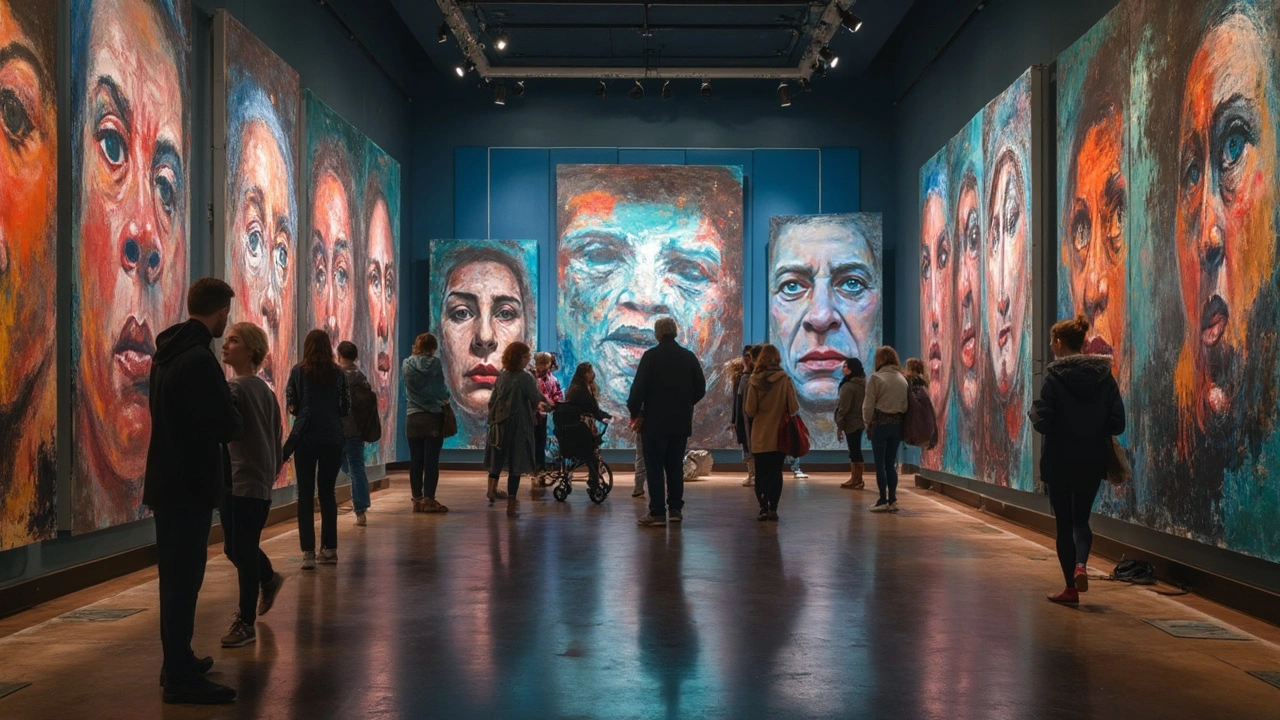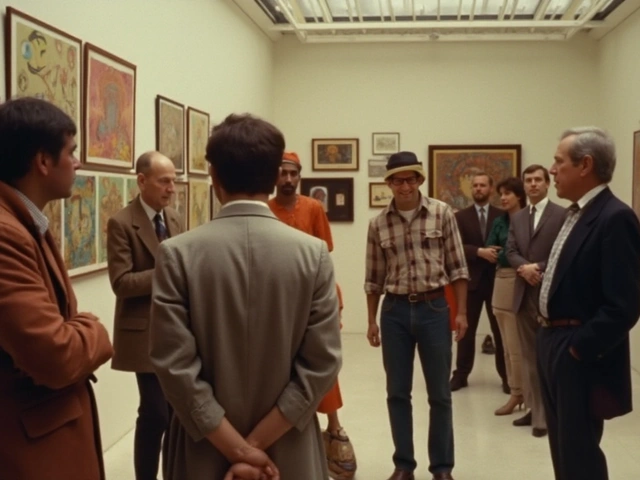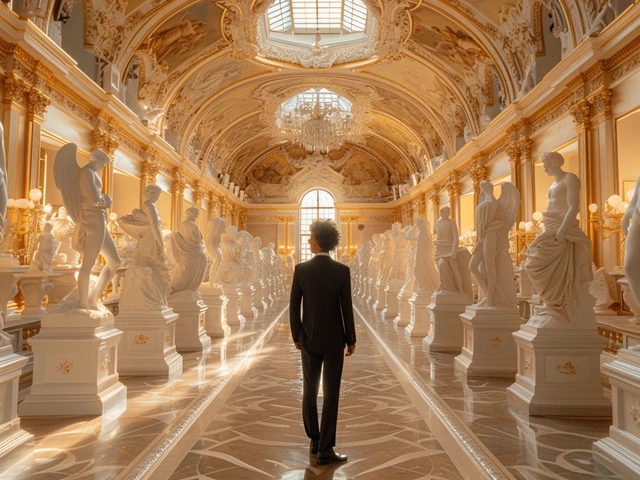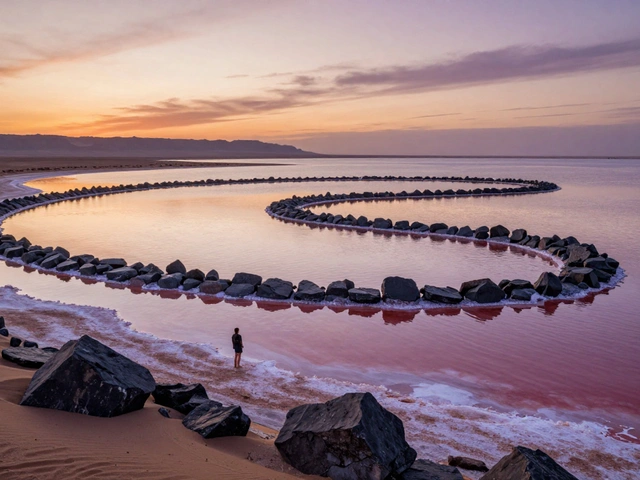Art didn’t flip from pretty landscapes to raw, nerve-struck canvases by accident. The shock came from a generation who decided that feelings-anxiety, ecstasy, rage-were worth more than polish. That switch detonated across painting, printmaking, film, and design, and it rewired the idea of what art is for. This piece breaks down what changed, how to spot it fast, and why the aftershocks still shape contemporary art and culture.
- TL;DR: Expressionism put emotion and lived truth ahead of realism, opened the door to abstraction, and made distortion and color carry meaning-not decoration.
- Key shift: line, color, and composition became tools to model inner life and social critique, not just accurate scenes.
- Why it lasted: it birthed new artist networks, cheap prints that spread ideas, and a playbook later used by Abstract Expressionists and Neo-Expressionists.
- How to use this: a step-by-step way to read Expressionist works, cheat-sheets to compare movements, and practical tips for students, teachers, and creators.
What Changed-and Why It Rewired Modern Art
If you’ve ever stood in front of a Kirchner street scene and felt slightly seasick, that’s the point. Expressionist artists didn’t want you to admire brushwork from a safe distance. They wanted you in the scene, pulse up, skin prickling. With Expressionism, beauty stopped being the goal; authenticity did.
What flipped: subjectivity outranked accuracy. Painters squeezed color to scream, slashed lines to agitate, tilted space to trap you. They pushed beyond what the eye saw to what the psyche knew. That idea-art as a direct line to inner life-blew open the path to abstraction.
Where it sparked: Germany and Austria lit the fuse. Die Brücke (Dresden, 1905) and Der Blaue Reiter (Munich, 1911) formed as creative labs, not just clubs. Their exhibitions, almanacs, and manifestos broadcast a new value system: instinct over imitation, spiritual intensity over surface likeness. The Der Blaue Reiter Almanac (1912) pulled in non-Western art, folk traditions, and children’s drawings as rigorous sources, not curiosities. Kandinsky’s Concerning the Spiritual in Art (1911) argued that color and form have psychological “vibrations” you can feel.
How it spread: cheap, gutsy prints. Woodcuts and lithographs made the look portable and affordable, a big deal for students and workers. Käthe Kollwitz’s prints turned grief and solidarity into public images people could own. That democratization gave art a wider job: document pain, spark empathy, campaign for change.
What it looked like: jagged contours, acidic or compressed palettes, faces like masks, bodies bent by feeling, perspectives buckling like a bad dream. Urban anxiety shows up in Ernst Ludwig Kirchner’s Berlin street scenes. Franz Marc’s animals are coded emotion-blue horses for spirituality, yellow for joy, red for power and danger. Egon Schiele’s self-portraits are all nerves and bone, lines vibrating with hunger and guilt.
Politics cut in: World War I shattered the early bravado. Styles hardened into social critique in the 1920s, from Otto Dix’s trench nightmares to George Grosz’s acid takes on corruption. The Nazi regime later labeled much of this art “degenerate” and staged the 1937 Degenerate Art exhibition to humiliate it. They confiscated thousands of works, banned artists, and forced others to flee. That diaspora shuffled talent and ideas into new centers, especially the United States.
Why museums changed: curators learned to defend art that was “ugly,” personal, or overtly political. Collections opened to prints and posters. Shows began to frame non-Western art and folk objects as equals in the story of modernity, not props. The canon stretched because Expressionists insisted it must.
The long echo: without this movement’s license to make emotion the whole subject, you don’t get Abstract Expressionism’s fields of feeling (Rothko), attacks of paint (Pollock), or the feral returns of Neo-Expressionism (Baselitz, Kiefer) in the 1980s. German Expressionist cinema-The Cabinet of Dr. Caligari (1920), Nosferatu (1922)-pressed the look into film: tilted sets, stark light, psychological horror. You see the DNA in graphic novels, album art, and theater design today.
| Year(s) | Group/Artists | Milestone or Text | Why It Mattered |
|---|---|---|---|
| 1893 | Edvard Munch | The Scream | Proto-Expressionist template: inner terror over realistic space. |
| 1905 | Die Brücke (Kirchner, Heckel, Nolde, Schmidt-Rottluff) | Group founded in Dresden | Collective exhibitions; woodcut revival; raw color/line. |
| 1908-1910 | Vienna (Schiele, Kokoschka) | Early solo shows and portraits | Psychological intensity; distorted bodies as truth-telling. |
| 1911 | Vasily Kandinsky | Concerning the Spiritual in Art | Color and form as direct carriers of emotion; case for abstraction. |
| 1911-1912 | Der Blaue Reiter (Kandinsky, Marc, Münter, Macke) | Almanac published (1912) | Global, folk, and children’s art reframed as modern sources. |
| 1914-1918 | Multiple | World War I | Trauma deepens subject matter; social critique accelerates. |
| 1920s | Neue Sachlichkeit (Dix, Grosz) | Postwar realism with bite | Expressionist moral urgency shifts into hard-edged critique. |
| 1937 | Nazi Germany | Degenerate Art exhibition | Suppression scatters artists; foreign museums acquire banned works. |
| 1940s-1950s | Abstract Expressionism (Pollock, de Kooning, Rothko) | New York ascends | Emotion-first logic scales up into gesture and fields of color. |
| 1980s | Neo-Expressionism (Baselitz, Kiefer, Lüpertz) | Return to figuration and history | Re-engages trauma and national memory with raw paint. |
Primary sources to know: Kandinsky’s Concerning the Spiritual in Art (1911), the Der Blaue Reiter Almanac (1912), and exhibition catalogs for Die Brücke and Der Blaue Reiter shows. Museum collection notes from MoMA, Tate, and the Städel confirm provenance trails and the impact of the 1937 seizures.
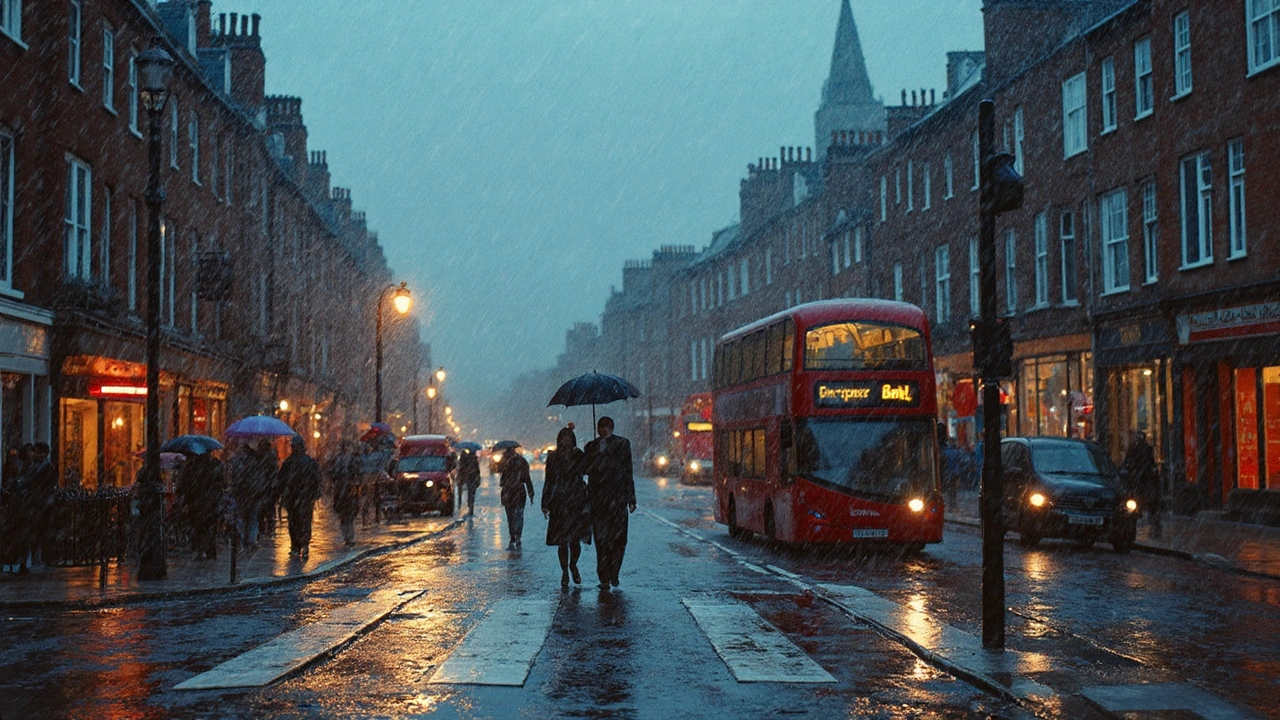
How to Read Expressionist Art-and Track Its Influence
Want a quick, reliable way to decode these works? Use this sequence. It’s fast and it works on paintings, prints, posters, even film stills.
- Scan the mood first. Gut check: anxious, ecstatic, grieving, manic? Name it with one word. If you can’t, note two.
- Clock the color logic. Are hues naturalistic or symbolic? Watch for high-key contrasts (acidic greens, hot pinks) or tight, bruised palettes.
- Follow the line. Are contours jagged, carved, or fluttery? In woodcuts, the line literally chops light from dark-meaning turns on those edges.
- Test the space. Is perspective tilted, compressed, or claustrophobic? If the floor runs uphill, the artist wants you off balance.
- Feel the body language. Masks, elongated limbs, twisted torsos signal emotion over anatomy.
- Ask what the work wants from you. Sympathy? Alarm? Resistance? That’s the ethical core-what Expressionism added to modern art’s job.
Quick compare-don’t mix these up:
- Fauvism vs Expressionism: both use wild color; Fauvism leans sunny and decorative; Expressionism is darker, more psychological, often urban or spiritual.
- Cubism vs Expressionism: Cubism deconstructs vision to analyze form; Expressionism distorts form to amplify feeling.
- Impressionism vs Expressionism: Impressionism observes light; Expressionism declares emotion.
Decision shortcut (use when you’re stuck):
- If the picture feels emotionally loud before you identify the subject, it’s probably Expressionist or influenced by it.
- If you can diagram the geometry before you feel anything, you’re likely in Cubist territory.
- If the light and weather are the stars, you’re probably looking at Impressionism.
Case studies you can test in a museum or book:
Kirchner, Street, Berlin (1913): Faces look mask-like, eyes blank, colors clash, perspective tilts forward like a subway car braking. You should feel pressed and watched. That’s urban alienation rendered as composition.
Kollwitz, The Survivors (1923, lithograph): Black contour wraps a cluster of mothers and children. No fancy details. Just weight. The economy of line is the ethics: keep the focus on grief and solidarity.
Kandinsky, Composition VII (1913): The subject is almost gone. Think in forces, not objects-crossing vectors of color and line. It’s orchestral: crescendos in red and blue, pauses in pale zones. The painting is a mood engine, not a window.
Schiele, Self-Portrait with Raised Bare Shoulder (1912): Skin is greenish, lines tremble, eyes burn. Anatomy is a confession, not a study. The distortion is moral, not technical: this is what it feels like to be watched and exposed.
Practical heuristics:
- Symbolic color rule-of-thumb: blue often signals spiritual distance; red is danger or desire; yellow toggles between joy and fever. Context decides which.
- Line energy test: slow, smooth lines soothe; choppy lines agitate. In prints, think of the pressure of the hand-where the artist pushed harder, the feeling spikes.
- Space as psychology: the more the room tilts or crushes the figure, the more the work argues that society is part of the problem.
If you’re teaching or studying, use this note format every time you look:
- Mood word(s): ____
- Color logic (symbolic/natural, hot/cool): ____
- Line (jagged/smooth; thick/thin): ____
- Space (tilted/flat/deep): ____
- Ethical ask (what the work wants): ____
Influence map in a sentence: Expressionism legitimized emotion as subject, which legitimized non-resemblance as method, which made abstraction intellectually defensible, which unlocked painting, film, and design to do psychological work at scale.
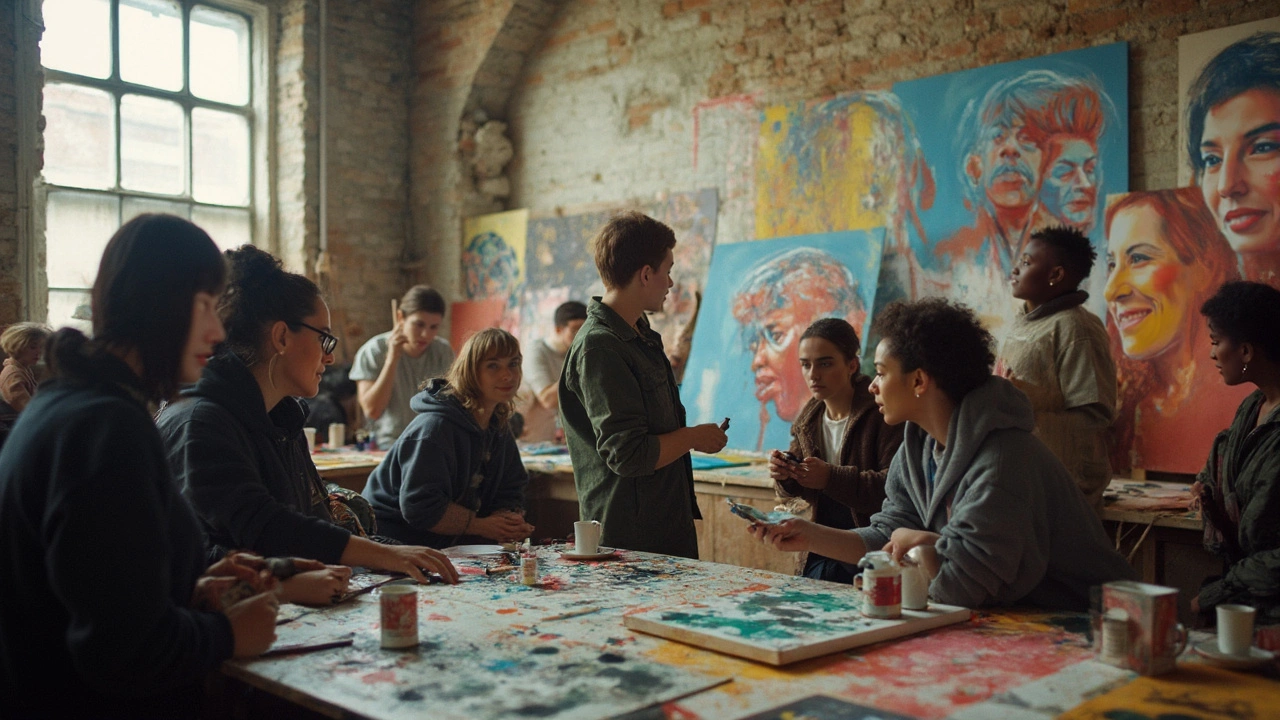
Cheat Sheets, Checklists, Mini‑FAQ, and Next Steps
Fast checklist-spotting Expressionist features:
- Colors feel chosen for mood, not nature.
- Lines carve or slash; edges feel tense.
- Figures seem haunted, mask-like, or hyper-intense.
- Space leans, buckles, or crowds the subject.
- After a minute of looking, you can name a specific emotion the picture wants from you.
Cheat sheet-movement comparisons at a glance:
- Expressionism: emotion-first; distortion as truth; prints central; activist streak.
- Fauvism: color joy; less angst; decorative rhythm.
- Cubism: analytic structure; muted palette; multiple viewpoints.
- Surrealism: dream logic; uncanny juxtapositions; less about line energy, more about image ideas.
For creators-applying Expressionist principles without pastiche:
- Pick one emotion and design everything around it: palette, brush size, paper tooth, even canvas orientation.
- Limit to three hues and push value contrast. Emotional clarity improves when color choices are decisive.
- Draw with your non-dominant hand for five minutes to find an honest line. Then refine, but keep some of that wobble.
- Carve or paint fast, edit slow. Speed captures impulse; editing keeps it readable.
For students-sources that actually help:
- Kandinsky, Concerning the Spiritual in Art (1911) for theory direct from the source.
- Der Blaue Reiter Almanac (1912) to see how broadly the artists looked for models.
- Museum catalogues from MoMA or Tate for provenance and exhibition histories, especially around 1937 seizures and subsequent acquisitions.
For educators-teaching in one class period:
- Warm-up: list three emotions; assign each a two-color palette. Five-minute sketches per emotion.
- Compare: one Die Brücke woodcut vs one Der Blaue Reiter painting. Ask: same mood, different means?
- Exit ticket: one sentence on what the artwork “wanted” from them-empathy, alarm, awe.
For collectors or curators-pitfalls and checks:
- Beware “Expressionist style” without period context. The look alone isn’t proof; check paper type, printing method, and publisher for prints.
- Provenance gaps circa 1933-1945 need careful scrutiny. Cross-check catalog raisonnés and institutional records.
- Condition matters more in prints than beginners expect; edge toning and trimmed margins change value dramatically.
Mini‑FAQ
Is Munch an Expressionist? He’s a key precursor. The Scream (1893) sets the psychological agenda, but the organized movement coalesces in the first decade of the 1900s in Germany and Austria.
Why so many prints? Woodcuts and lithographs were cheaper to produce and buy, so they spread ideas fast and aligned with the movement’s social aims. The tactile gouge of the woodcut also suited the aesthetic-line you can feel.
Did Expressionism cause abstraction? Not alone, but it paved the way by arguing that color and form can carry meaning without representing things. Kandinsky’s theory and paintings are the clearest bridge.
How did the 1937 Degenerate Art show affect the movement? It tried to bury it. The purge dispersed artists and opened a market for foreign museums to acquire confiscated works. Ironically, that globalized Expressionism’s legacy.
Where else did Expressionism land? Film, theater, architecture. Think jagged sets and sharp light in Caligari, the sculptural dynamism of Mendelsohn’s Einstein Tower, and stage productions that externalize inner states.
Next steps and troubleshooting by scenario
- Museum-goer with 15 minutes: pick one Expressionist room. Do the six-step read above. Write down the exact emotion you felt and one formal choice that caused it.
- Student on a deadline: choose two primary sources (Kandinsky 1911 + Der Blaue Reiter Almanac 1912) and one case study image. Argue how theory shows up in the image.
- Art teacher with mixed ages: use black paper and white pencil for five-minute “line mood” portraits. Immediate wins; nobody gets bogged down mixing paint.
- Artist stuck in realism: cap your palette, switch tool (brush to palette knife, pencil to reed pen), and timebox to 20 minutes. The constraint forces expressive decisions.
- Curator planning a show: pair prints with paintings to highlight how line and color carry the same mood through different media. Add a wall label on 1937 provenance shifts.
Common snags and fixes
- “I can’t tell Expressionism from Fauvism.” Focus on mood. If the work feels uneasy or confrontational, you’re likely in Expressionist territory.
- “The distortion looks like incompetence.” Read the choices as rhetoric, not mistakes. Ask what the distortion argues about the subject.
- “Abstraction loses me.” Track emotional cues: tempo of brushwork, temperature of color, density vs breath in the composition. Feeling is the map.
If you remember one thing, let it be this: Expressionism doesn’t just show you a scene; it makes a claim about how it feels to be alive-and it uses every tool in the studio to make you feel it too.

